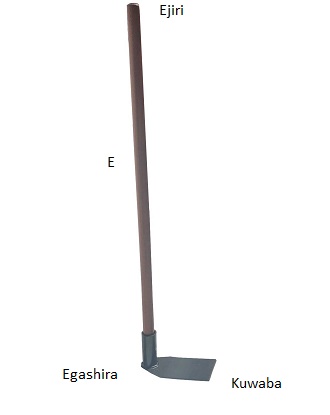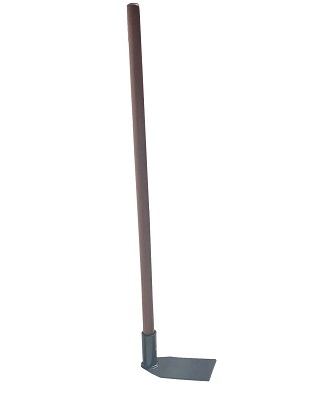Kuwa The Okinawan Weapon Based On The Garden Hoe
The Kuwa is a traditional Okinawan weapon that was based on the garden hoe, but it is much more than just a farming tool. The Kuwa has a unique design that makes it an effective weapon in combat situations. In this article, we will delve into the history and characteristics of the Kuwa and explore why it has become an iconic symbol of Japanese martial arts.
History of the Kuwa
The Kuwa was first created in Japan during the feudal era. At that time, farmers were not allowed to own weapons for self-defense, so they had to find ways to protect themselves using farming tools. The Kuwa was born out of this necessity, as farmers found that the garden hoe was an effective weapon when used in a particular way. The blade of the hoe could be used to strike, while the hook could be used to catch and disarm an opponent.
Over time, the Kuwa became more refined, and its design was adapted for combat. The blade was made thicker and wider, and the hook was curved to make it more effective at catching weapons. The Kuwa was eventually adopted by samurai warriors, who appreciated its versatility and effectiveness in close-quarters combat.
Characteristics of the Kuwa
The Kuwa is a unique weapon with several distinctive features. The blade of the Kuwa is wider and thicker than that of a regular garden hoe, and it is typically made of steel. The blade can be used to strike or to block an opponent’s attack.
The hook of the Kuwa is another essential feature. It is curved and sharpened, making it an effective tool for catching and disarming an opponent’s weapon. The hook can also be used to trip an opponent or to pull them off balance.
The handle of the Kuwa is typically made of wood or bamboo and is designed to be held with both hands. The handle is often longer than that of a regular garden hoe to provide greater reach and leverage.
Uses of the Kuwa
The Kuwa is primarily used in close-quarters combat situations. It is a versatile weapon that can be used for offense or defense, and its unique design makes it well-suited to disarming opponents.
In addition to its use as a weapon, the Kuwa is also used in traditional Japanese martial arts such as Kendo and Jujitsu. The Kuwa is often used to teach students the importance of adapting to different situations and using the tools available to them.

Kuwa Techniques
Here are some basic techniques for using the Kuwa. Firstly, the Egashira (top end) serves as a thrusting tool. Rather than solely depending on broad swinging motions, the Kuwa can be prepared similarly to a bo and propelled forward with remarkable speed. Due to its compact size, the Egashira can be quickly withdrawn and readied for an additional thrust.
The side opposite the hoe blade of the Egashira is also functional. Swings with this part of the Kuwa lead to blunt force trauma. While this might seem less potent than a direct blade strike, it facilitates swift follow-up moves. In situations involving multiple adversaries or the need to strike one opponent repeatedly, it’s crucial to prevent the blade from getting lodged in the opponent’s clothing or body.
The Ejiri (butt end) plays a vital role in Kuwa techniques as well. A hoe with a thick metal blade plate can be quite heavy at the top, leading to slower movements compared to a well-balanced weapon like a sword. To offset this drawback, one can employ the Ejiri for initial blocking and striking, followed by a final move with the sturdy front end.
The Ejiri can be maneuvered swiftly. When holding a Kuwa with the Ejiri directed toward your adversary and the weighty metal end at the back, the metal acts as a pivot, enhancing the speed and dynamics of the Ejiri. The result is a tool that can match pace with fast weapons, yet deliver powerful, heavy strikes.
Final Thoughts
The Kuwa is a fascinating weapon with a rich history and unique design. It is a testament to the ingenuity and resourcefulness of the Japanese people, who were able to turn a simple farming tool into an effective weapon of self-defense. The Kuwa is still used today in traditional Japanese martial arts, and its legacy lives on as a symbol of Japanese culture and martial arts.
Want To Learn More?
We hope you enjoyed this article. If you’re seeking more details about traditional martial arts weaponry, we invite you to read the articles featured below.
Next Martial Arts Weapons article: The Kwan Dao (Guan Dao)
Previous Martial Arts Weapons article: Kusarigama – Chain and Scythe Weapon
Consider this elaborate article that catalogs a broad spectrum of Martial Arts Weapons right here at Dojo Directory.


